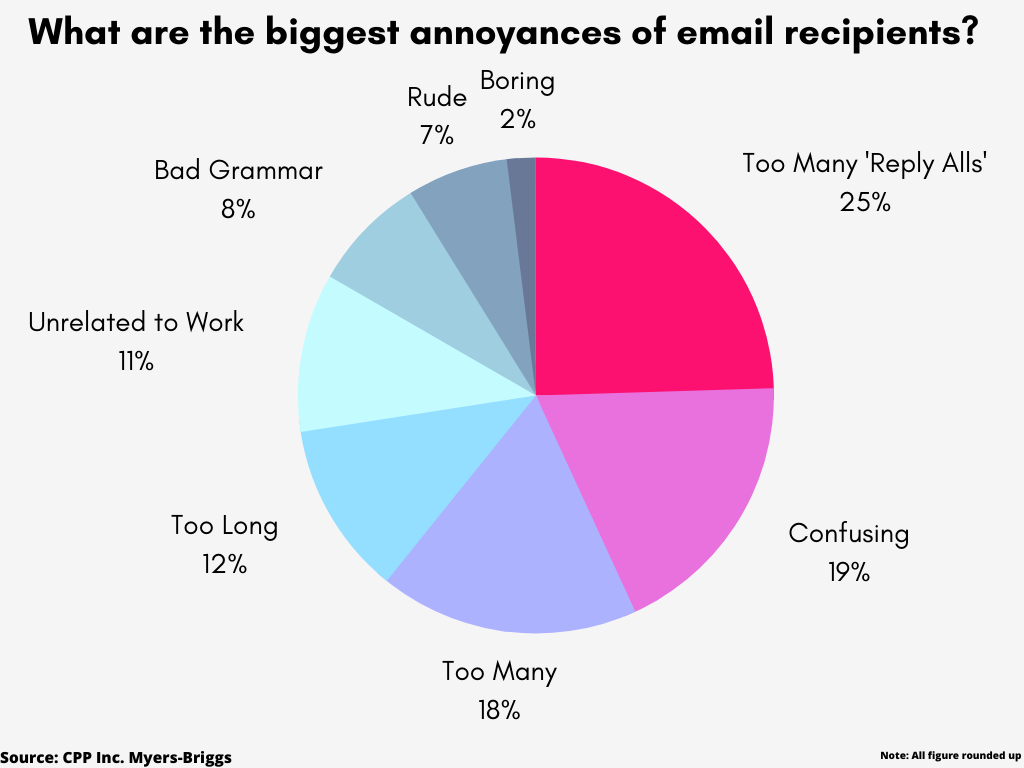30th May 2023
A recent survey found that for 43% of respondents, email was the main source of confusion and annoyance in the workplace. We all use emails in our daily lives, but how can we maximize the benefits while minimizing the headaches?
With emails being a key topic in our Business English Writing courses and workshops, here are our top suggestions to help avoid causing confusion and frustration when using email.
The Recipient
Let’s start with the recipient. You want your reader to clearly understand your message, so put yourself in their shoes. Do they work in an office all day? Do they have regular access to emails? Or do they work on-the-go in multiple locations? You may be surprised to hear that a 2021 survey found that 40% of all emails are accessed via a mobile device. With this in mind, our first suggestion is to keep your emails phone friendly.
Phone friendly emails have a short subject line and contain clear, easy to understand tasks. You can also consider using a larger font size to aid your reader and reduce the size of your attachments (where possible).
A common annoyance amongst email users is receiving too many emails and too many ‘reply all’ emails. So, consider carefully who you CC, and only send your email to people that are essential to your task or project.
The Subject line
A good subject line that summarises your email will get a faster response. Statistics from 2019 show that the average person receives 121 emails per day. So, keep your subject line concise and specific. Don’t just state the topic of the email (e.g., Budget Meeting), refer to the content too (e.g., Q2 Budget Meeting – Agenda). This will enable the recipient to prioritise the message. Remember, most recipients receive your email through a notification on their computer or phone, so keep the subject line short.
Introduction
The introductory sentence of your email is critical and should serve two purposes:
1. To introduce yourself to new contacts (if needed);
2. To clearly state your reason for writing or what action needs to be taken.
Keep your instruction line short and clear so that the reader can easily understand the topic you are talking about.
Length vs Clarity

1 in 3 email recipients feel that the emails they receive are either too long, or confusing and vague. Finding a balance between the content and length of your email is important.
The optimal length for an email is three paragraphs which allows you to introduce your email clearly, provide additional details and then summarise whatever action is needed. If you need a quick response to your email, you can also consider stating the action needed in your first sentence.
Long emails will take longer for the recipient to respond to, so try your best to be concise. If have more than three points to raise in the body of your email, always use bullet points. Be careful not to cut corners or write in an unprofessional manner.
Vocabulary
Keep your key message clear. Use the same language you would use if you were talking directly to the reader, this will ensure your message is clearly expressed. Write in a balanced manner using positive statements and keep negative points to a minimum. Avoid using specific industry terms or acronyms that the reader may not be familiar with.
Etiquette
Using capital letters is considered rude and looks like you’re SHOUTING!! If you have a point that you need to highlight you can use embolden or underline the text. However, overuse of bold or underlined text may seem a bit demanding. Choose one or the other for all your emails and use it sparingly. If your message is clear, then you shouldn’t need to use bold or underlined text at all.
If you would like to find out more about etiquette for business meetings, you can find our Video conferencing etiquette blog.
Summarise
The final paragraph of your email should summarise the content and include the action areas or follow up that you require. Keep this part of your email concise and include a date that you need a response by.
If you are speaking to someone in a higher position or a customer, you can use phrases like ‘when you have the time’, ‘at your earliest convenience’ or ‘I look forward to hearing from you’.
Attachments
We’ve all suffered the embarrassment of sending an email that we forgot to include an attachment with. To avoid this, add your attachments at the start before you write the text.
If your email includes a schedule, report, itinerary, stock list or an order, add it as an attachment. This makes it easier for the reader to find later and to share with others if needed. The filename of your attachments should be clear and informative, and you should refer to them by their correct name in the email so they are not overlooked or forgotten.
Be careful with the size of the attachments you send. You don’t want to use up someone’s phone data with a large file.
Proofreading
Having written your email, reread it to check for clarity. Use a spellcheck to minimise spelling and grammar mistakes. Also, during this process, look for unnecessary text and repetition you can cut from the email. If you are unsure of the clarity of your email, read it to a colleague to get their opinion before pressing send.
Timing
Choose the optimal time to send your email. Preferably a time when you know the recipient will be at work. If you send your email too late in the day, it may become lost in the recipient’s inbox by the time they check their emails again the following morning.
Patience
Allow a reasonable amount of time for a response. If your email is time sensitive, you should state this in the subject line or opening sentence and clearly request a response time. If you don’t hear back from the other person by the time you wanted, don’t CC everybody in a follow up email, just directly email the person you require action from. Alternatively, you could message them or give them a quick call instead.
We hope this article was useful. If you are interested in learning more practical business English skills, you can read our other blogs.



